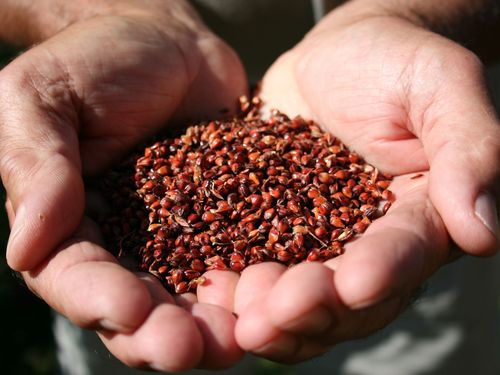Garnierspenzer, Hat, and Steppmieder
Traditional craftsmanship in Salzburg, inscribed 2021
Since around 1850, the Garnierspenzer (lit. ‘garnished spencer’) and Steppmieder (‘quilted bodice’) have featured in the festive traditional costumes of the Alpine regions of Pinzgau, Pongau, and Lungau in the province of Salzburg. These costumes stand out due to the elaborate design of the tops, the application of lavish silk flowers on the spencer, and the raised quilting on the bodice. These features take a high level of tailoring knowledge and experience to produce. They also contribute to their wearers’ identification with the region.
The main features of the Steppmieder and Garnierspenzer costumes date back to the 17th century and reflect the bourgeois and courtly fashions of that era. Today, the entire costume encompasses eight elements that can be combined in various ways in accordance with the occasion; the skirt and top are separate pieces of clothing but can be connected with a silver hook, while the skirt itself is the element which remains consistent in this traditional dress. On Sundays, the costume is worn as Miedergewand (lit. ‘bodice robe’), which includes the Steppmieder and Unterröckl (‘underskirt’). The Garnierspenzer, which is usually black, is worn for important occasions. The silk Miedertuch (‘shawl’), which is the same colour as the apron, is tucked into the neck of the Garnierspenzer. The finishing touch to this costume is the so-called Bürstelhut (lit. ‘bristle hat’). The creation and embellishment (garnishing) of the Garnierspenzer, including artistic frills, buds, flowers, and leaves, requires a considerable degree of skill, as an entire Garnierspenzer takes up to 130 hours to produce. This traditional costume’s production requires the highest level of sewing skills and the region’s master tailors have been producing these dresses at their workshops for generations. There is room for creativity in the design and colouring of the bodice and spencer, which means that this item of clothing constantly reinvents itself.
These costumes are produced using the greatest possible share of regional materials, and they are often handed down within families; as such, they do not only fulfil a social role but also represent a particularly sustainable type of clothing. They are viewed as an important element of Pinzgau’s identity. They engender a feeling of community amongst wearers and a connection to their own history.
On the one hand, initiatives carried out by associations, such as documentations, media work, and a scheduled special exhibition on this topic, contribute to the safeguarding of the Garnierspenzer with its hat and Steppmieder; on the other hand, members of the Catholic Women’s Movement, women’s traditional costume groups, and farmers also play an important role in keeping the tradition alive by wearing the dress.
Contact
Downloads
- Application form (in German only) 6 MB (pdf)
- Expertise (in German only) Hutter 132 KB (pdf)
- Expertise (in German only) Mayrhofer 837 KB (pdf)

![[Translate to EN:] Garnierspenzer mit Hut –Steppmieder](/fileadmin/Redaktion/Kultur/IKE/IKE-DB/images/Garnierspeznzer_I.jpg)
![[Translate to EN:] © J. Ségur/ZED, with the permission of UNESCO](/fileadmin/_processed_/d/b/csm_Convention-2003-IKE_0832a6a47d.jpg)
![[Translate to EN:] © ÖUK](/fileadmin/_processed_/3/9/csm_P1011318_7eac86402f.jpg)

![[Translate to EN:] © Weitblickfilm](/fileadmin/_processed_/9/8/csm_Workshop_17_2dee1e1fd8.jpg)